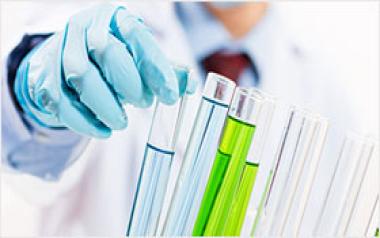The State Pollution Control Board, Assam has one Central Laboratory attached to Head office at Bamunimaidam, Guwahati and 4 (four) Regional Laboratories attached to the Regional offices at Sibsagar, Tezpur, Silchar and Bongaigaon under it equipped with manpower and equipments for analysis of environmental pollution related parameters for regular pollution control enforcement and for scientific research in the field.
The Central Laboratory has mainly five sections : viz, Water Section, Wastewater section, Bacteriology Section, Bio-monitoring & Bioassay Section and Air Section. This Laboratory is equipped with a few sophisticated instruments for analysis of water, air and solids for all possible pollutants and is the referral laboratory for the Board. A list of parameters analysed in the Central Laboratory together with the methodology used for analysis with available instruments are mentioned below:

| Sl. No. | Parameters | Method |
|---|---|---|
| 1. | Colour | Visible Comparison Method (only potable waters) |
| 2. | Conductivity | Conductivity Meter |
| 3. | pH Value | pH Meter |
| 4. | Suspended Solids (Total Number filterable) | Membrane filter apparatus (Millipore vacuum filtration apparatus) |
| 5. | Settleable Solids | Imhoff concentration: By Volume (mg/L) |
| 6. | Sludge Volume Index | Imhoff conc. Membrane filter apparatus or Gooch crucible |
| 7. | Total Solids | Gravimetric |
| 8. | Temperature | Thermometer |
| 9. | Turbidity | Nephelometric |
| Sl. No. | Parameters | Method |
|---|---|---|
| 1. | Acidity | a. Electrometric/Potentiometric titration b. Color Indicator titration |
| 2. | Alkalinity | a. Electrometric/Potentiometric titration b. Color Indicator titration |
| 3. | Ammonical Nitrigen | a. Distillation followed by colorimetric method (Nesselerization b. Distillation followed by titrimetric method c. Distillation followed by ion selective electrode Method. |
| 4. | Arsenic | Silver Diethyl dithiocarbonate |
| 5. | Boron | UV-VIS Spectrophotometer |
| 6. | Carbon Dioxide | Titrimetric |
| 7. | Cadmium | Atomic Absorption Spectrophotometer |
| 8. | Chemical Oxygen Demand | Dichromate Reflux |
| 9. | Biochemical Oxygen Demand | Three day BOD at 27 degree Celsius |
| 10. | Chloride | Titrimetric (Argentometric or Mercuric Nitrate) |
| 11. | Chloride Residual | Titrimetric |
| 12. | Calcium | Titrimetric (EDTA |
| 13. | Chromium | a. Atomic Absorption Spectrophotometer (For Total) b.Colorometric (Diphenylcarbazide) (For hexavalent, trivalent and total |
| 14. | Copper | a. Atomic Absorption Spectrophotometer |
| 15. | Dissolved Oxygen | Winkler titrimetric-azide-modification (Iodometric) |
| 16. | Fluoride | a. Distillation followed by Colorimetric(SPADNS) b. Distillation followed by Fluoride Selective Electrode. |
| 17. | Hardness Total | Titrimetric (EDTA) |
| 18. | Iodine | Colorimetric (Leuce Crystal violet of Catalytic reduction) |
| 19. | Iron | Colorimetric (Phenanthroline) |
| 20. | Lead | Atomic Absorption Spectrophotometer |
| 21. | Manganese | Atomic Absorption Spectrophotometer (Total) |
| 22. | Magnesium | By difference (between total hardness and calcium determined titrimetrically) |
| 23. | Mercury | Flameless (cold vapour) Atomic Absorption (Mercury Analyzer) |
| 24. | Nickel | Atomic Absorption Spectrophotometer |
| 25. | Nitrite Nitrogen | Colorimetric (Diazotization) |
| 26. | Nitrate Nitrogen | Colorimetric (Chromotropic Acid) |
| 27. | Oil & Grease | Gravimetric (Simple extraction) |
| 28. | Phosphate | a. Orthophosphate-Pretreatment followed by Colorimetric (Stannous-Chloride or Vanadium Molybdate) b. Polyphosphate - -do- c. Total - -do- |
| 29. | Phenols | Distillation followed by Colorimetric(4-Aminoantipyrine) or (Chloroform extraction) |
| 30. | Potassium | Flame photometer |
| 31. | Silica | Colorimetric (Heteropoly blue or Molybdosilicate) |
| 32. | Sodium | Flame photometer |
| 33. | Sulphite | Titrimetric (Iodometric) |
| 34. | Sulphate | Turbidimetric |
| 35. | Zinc | Atomic Absorption Spectrophotometer |
| Sl. No. | Parameters | Method |
|---|---|---|
| 1. | Total Coliform | Multiple Tube Dilution Technique |
| 2. | Fecal Coliform | Multiple Tube Dilution Technique |
The use of living things to detect changes in the environment is called bio-monitoring. Both the occurrence of bio-accumulation and biological effects has often demonstrated useful and reliable information on the state environment. Bio-monitoring methods are cheaper, precise and sensitive to detect adverse conditions in the environment.
Both the natural and artificial substratum methods are so far being used for bio-monitoring. The Pollution Control Board, Assam has already started bio-monitoring in the regular water quality monitoring programme being conducted under the Monitoring of Indian National Aquatic River System. Some more projects under the guidance of CPCB are undergoing in the bio-monitoring laboratory. The list of parameters studied so far are :
| Sl. No. | Parameters | Method |
|---|---|---|
| 1. | Saprobatic Index | Natural Substratum - Artificial Substratum |
| 2. | Diversity Index | -DO- |
| 3. | P/R ratio | -- |
In the bio-assay lab nursing home samples are analysed to detect toxicity level on the basis of survival of fishes in several concentrations of the effluent. Method applied so far is Lethal Concentration (L/C 50).
| Sl. No. | Parameters | Method |
|---|---|---|
| 1. | NOx | Sodium Arsenite Method |
| 2. | SPM | High Volume Method |
| 3. | SO2 | Modified West and Gacke Method |
| 4. | CO | IR Spectroscopy Method |
| 5. | NH3 | Chemical |
| 6. | Velocity | Flue Gas Monitor |
| Micro meteorological | ||
| 7. | Wind Speed | Animometer |
| 8. | Temperature | Thermometer |
| Vehicular Emission | ||
| 9. | Carbon monoxide | N.D.I.R. Spectroscopy Method |
The 4 (four) Regional Laboratories attached to the Regional offices at Sibsagar, Tezpur, Silchar and Bongaigaon are also equipped with manpower and equipments for analysis of environmental pollution related parameters for regular monitoring under their jurisdictions.
